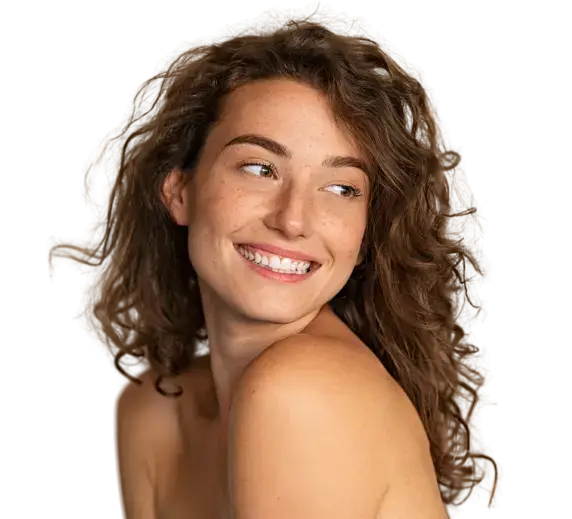Laser light therapy has revolutionized the cosmetic surgery industry with the power not only to improve the outer appearance of the skin but also to remove ugly spider veins and varicose veins lying just beneath the surface of the skin.
The ruby red laser beam has literally been split into a range of popular cosmetic uses such as Laser Vein Removal.
How Does Laser Vein Removal Work?
Laser Vein Removal is a fairly simple procedure. You take a highly focused beam of laser light and direct it onto the spider vein or large varicose vein. The intense heat from the light damages the vein, causing scar tissue to form and the vein to shrink and close.
By robbing the vein of its vital blood supply the vein dies and fades away. The result is clearer, smoother skin. The procedure is basically painless and there’s little if any downtime. Best of all, laser light therapy works.
Does Laser Spider Vein Removal Work?
Simple laser light therapy works best on spider veins and broken capillaries. Spider veins shouldn’t be confused with varicose veins, although they are similar. Varicose veins are usually larger and look like swollen ropes beneath the surface the skin. Spider veins are smaller and usually look like a spider’s web. The veins can be blue or red.
Spider veins can be caused by a number of different things. They are often related to aging and are seen in older patients. Although the veins might be more common in people in their 40s or 50s, some people develop them in their 20s. Some people inherit spider veins from their parents, and others see them after changes in hormone levels in the body. Being overweight or pregnant also increases pressure on the veins and can lead to spider or varicose veins.
Although spider veins aren’t a health concern and aren’t dangerous in most cases, people who have them often decide to undergo treatment to remove them. There are two common treatment options for the veins, sclerotherapy and laser treatment. Quintessa Medical Spa uses both options to remove the veins.
Both treatments are performed in an outpatient setting and require little recovery time. If you opt for sclerotherapy, the provider injects the veins with a solution that causes the veins to swell and then collapse. Blood is redirected to other veins and the spider veins fade from view. The number of injections and treatment sessions needed depends on how many spider veins a person has and how large the veins are.
During a laser treatment to remove spider veins, energy from the laser heats up the skin and veins, ultimately breaking the vein down. Most laser treatments have a built-in cooling device, so that the skin doesn’t burn and so that you feel only minimal discomfort. While some people only need a single treatment to remove the veins, those with larger areas of spider veins might need multiple treatments.
The risk of complications following a laser treatment is low. Many people are able to get back to their everyday activities right away. In most cases, people should avoid exercise and hot baths for a few days after the laser treatment.
Side effects can occur after the treatment, such as blistering or redness on the skin. Some people experience bruising or swelling at the site of treatment. Depending on a person’s complexion and skin color, the treatment can cause some discoloration. It’s usually not recommended for people with certain medical conditions, such as diabetes.
Can Spider Veins Reappear After Laser Removal?
After laser vein removal, patients definitely can have recurrence of some of their spider veins, depending on the cause of the spider veins in the first place. If the cause is due to deeper vein abnormality such as varicosities, then the increased venous pressure in the legs can contribute to the recurrence of spider veins.
Many of our patients ended up with spider veins secondary to pregnancy, and they otherwise have healthy leg veins today. When we treat the spider veins on those patients, they typically will not recur due to the fact that they otherwise have good venous pressure in their legs and will, therefore, not tend to make new spider veins after the laser vein treatment.
Dr. Andrew Campbell and the staff at Quintessa Medical Spa can discuss your spider vein concerns with you and review your treatment options.
Can Lasers Remove Varicose Veins
Varicose veins are a whole different story. They form as a result of “venous insufficiency,” another way of saying the blood is having difficulty traveling through the vein. As the blood flows backward it forms pools inside the vein. The internal blood pressure causes the vein to expand and become gnarled, bulging structures known as varicose veins.
Endovenous Laser Therapy is the treatment used for varicose veins in the legs. It acts in much the same way as simple laser therapy does in getting rid of spider veins. In this technique, a laser fiber is passed through a thin catheter into the vein, through which high-intensity pulses of laser light are directed in order to close the vein. The doctor is able to view the procedure on a duplex ultrasound screen.
Endovenous Laser Therapy is considered an alternative to the more painful vein litigation and stripping surgery. Laser vein removal is generally safe and renders excellent results – provided the physician is well trained and experienced in the procedure. Possible risks include burning, blistering, or bruising of the skin surrounding treated areas, as well as blood clots and permanent scars.
Can Laser Vein Removal Get Rid of Veins On My Face?
It is very unlikely that laser vein treatment will get rid of facial or temporal veins due to the fact that there is such a high blood flow in these areas that the laser seldom can reduce the veins significantly to the point where you see a visible improvement. There are, however, other options depending on your skin type. One option is fat grafting that can improve the overall volume in the area and camouflage the veins so that they are less visible.
We can certainly try different lights and lasers to improve the appearance of the veins, and we can also treat the overlying skin with lasers if the skin is extremely thin to try to improve the collagen of the skin so that the veins are less visible. Frequently, it requires multiple different approaches at the same time to give patients the results they desire.
It’s important that you consult a qualified practitioner or plastic surgeon who is fully trained and skilled in laser light vein removal to see if either procedure is right for you. Laser skin resurfacing is yet another non-surgical treatment for the removal of fine lines and wrinkles in facial skin.










